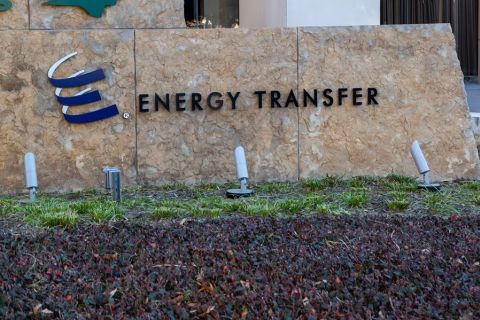Liquefied natural gas (LNG) has been a rising star in the energy world. Unstable oil prices, rising concerns about the durability of world oil reserves, and environmental issues have encouraged a drive towards energy diversification. Coal, nuclear power, hydroelectric power and LNG have been tried and tested variously. But LNG has proved far more attractive than other alternatives because it is highly efficient and has wide-ranging applications. It is also believed to be environmentally friendly. Japan has played a pivotal role in the growth of the LNG industry worldwide. Possessing no natural resources of its own and having to cope with massive energy demands, Japan imports the entirety of its energy requirements. Southeast Asia has been its key supplier of LNG for more than 30 years, and has amply proved its worth as a reliable and efficient supplier. The regional LNG industry provides excellent long-term prospects. Bold projects and new infrastructure are the order of the day. In the Asia-Pacific region, 40% of gas reserves are in Malaysia and Indonesia, followed by 10.2% in China. In terms of production, Indonesia accounted for 23.8%, followed by Malaysia (18.5%) and Australia (11.7%). These countries export natural gas, mainly in the form of LNG. In terms of consumption, Japan ranks first, accounting for 23.9%, followed by Indonesia (11.3%) and Malaysia (9.8%). Malaysia is the world's third-largest exporter of LNG, after Algeria and Indonesia, with gas reserves estimated to be 89 trillion cubic feet (Tcf), which could last up to 43 years. Three LNG plants are in close proximity at in Bintulu, Sarawak. Natural gas is supplied to the plants from the fields offshore and Malaysia's state-owned Petronas maintains the controlling interest of each. The three plants combined represent the largest integrated LNG capacity in the world with a capacity of 22.7 million metric tonnes per year. Brunei's LNG industry also provides appealing prospects. Brunei is Southeast Asia's third producer of LNG, behind Indonesia and Malaysia. It is the world's fourth exporter. Reserves are estimated at 13.8 Tcf, with production reaching 366 billion cubic feet in 2002. Brunei is also hoping that new exploration and development will yield significant gas discoveries, potentially as much as 7 Tcf. Brunei's gas is piped from major producing fields to the Brunei LNG plant, where it is separated and liquefied. This plant, located near the country's border with Malaysia's Sarawak province, has been operating for some three decades. It was the first LNG plant in Southeast Asia. Plans are currently under way to upgrade much of the facility and to expand train capacity. This is in view of increasing exports to Japan and South Korea. Exports to Japan and South Korea operate under 20-year contracts, which were recently renewed. 2003 also saw a few spot sales, notably to the U.S. If that were not enough, Brunei is planning to use LNG as the key for its diversification strategy. The Brunei economy is highly dependent on hydrocarbon revenues, which make up 40% of its gross domestic product (GDP). Using LNG as its engine, Brunei is seeking to develop a massive industrial infrastructure in a bid to diversify revenues and create jobs. The Brunei Economic Development Board (BEDB) has instigated a two-pronged strategy to attract investments, both of which are based on the country's LNG industry. The first part is to build industrial capacity that can be powered with LNG. Alcoa, the world's largest aluminum-maker, has already signed a memorandum of understanding with Brunei to build an aluminum smelter. A British company is pursuing plans to build a massive rubber-recycling plant. In both instances, the availability of LNG is a key requirement for success. The second part of the strategy aims to build a port on a small island about a kilometer from Brunei. This island's main appeal is that it enjoys water depths of about 20 meters immediately off its coast. This compares with depths of about 14 meters in Singapore. The planned increase in LNG capacity and the consequent rise in exports amount to good rationale for building a specialized LNG port. Add to that a new generation of LNG carriers, larger and heavier, and an increase in global LNG exports. Pending sufficient investment, this new port could well become the new major servicing point for the entire LNG-carrier fleet in the Asia-Pacific region. Thailand also enjoys considerable gas reserves, estimated at around 13.3 Tcf, with an additional 9 Tcf classified as probable. LNG is not used commercially in Thailand. The country has adopted a massive energy-diversification program to cope with rising energy demands, chiefly due to strong economic growth. Until the authorities decide otherwise, Thailand-owned PTT will be the sole buyer of natural gas, and it will sell it only to generate power for the country's 60 million inhabitants.
Recommended Reading
Talos Energy Expands Leadership Team After $1.29B QuarterNorth Deal
2024-04-25 - Talos Energy President and CEO Tim Duncan said the company has expanded its leadership team as the company integrates its QuarterNorth Energy acquisition.
Energy Transfer Ups Quarterly Cash Distribution
2024-04-25 - Energy Transfer will increase its dividend by about 3%.
ProPetro Ups Share Repurchases by $100MM
2024-04-25 - ProPetro Holding Corp. is increasing its share repurchase program to a total of $200 million of common shares.
Baker Hughes Hikes Quarterly Dividend
2024-04-25 - Baker Hughes Co. increased its quarterly dividend by 11% year-over-year.
Weatherford M&A Efforts Focused on Integration, Not Scale
2024-04-25 - Services company Weatherford International executives are focused on making deals that, regardless of size or scale, can be integrated into the business, President and CEO Girish Saligram said.





